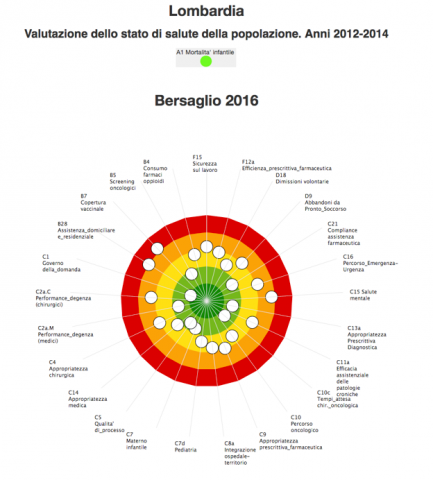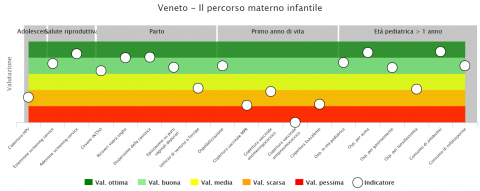HEALTHCARE Management, PRESENTATION OF “Network OF REGIONAL AUTHORITIES” MONITORING REPORT 2016: Sant’Anna SCHOOL LAB. MeS, UNIVERSITY of Milano Bicocca AND UNIVERSITY OF Bologna deFINE STRATEGIES TO IMPROVE OUTCOMES

The Sant’Anna School Laboratory for Healthcare Management (MeS), the CRISP centre (Centro di ricerca interuniversitaria per i servizi di pubblica utilità) of University Milano Bicocca and the DIBINEM unit (Unità di supporto metodologico e statistico alla ricerca biomedica e sui servizi sanitari) of university of Bologna released the “Network delle Regioni” monitoring report 2016 concerning 11 Regional Authorities and 2 Province local authorities, that called for the collaboration strategies of health care and public health systems for the purpose of improving population health.
The local authorities of Basilicata, Calabria, Liguria, Lombardia, Marche, Province autonome di Bolzano e di Trento, Puglia, Toscana, Umbria, Veneto, Emilia-Romagna, and Friuli Venezia Giulia share the goal of ensuring the health of populations; one approach to answer this goal involves actively intervening with the population health management. The “Network delle Regioni” monitoring report is a tool used to describe a variety of approaches developed to improve quality of care while managing costs; it assessed 300 current performance indicators and the key activities were associated with the selection of 139 indicators.
The MeS Lab., under the supervision of Professor Sabina Nuti, supports the 13 Regional and Local Authorities in the benchmarking approach for implementing their best practices at best cost. The MeS Lab benchmarking platform is needed to compare indicators and, as a tool based on voluntary and active collaboration, it focuses essentially on careful preparation of the process, monitoring of the relevant indicators, the staff involvement and the patients' expectations.
Drawing on the ‘pentagram model’ with its multi-dimension perspectives - management and organisation assessment, local resource mobilization and regional strategies - the report identified additional management approaches that address the sustainability of the healthcare system and the determinants which affect the health of the target population. The assessment performed has the objective to contribute to the evaluation of the effectiveness of “patients’ path” including patient choice, patient information and patient involvement since it allows for assessing the efficiency and public satisfaction of health care delivery.
The report shows a need for improvement, especially on patient experience of using health services with ambulatory care. In fact, many patients do not receive immunizations and other preventive services and vaccination rates for adults and children are below optimal levels. According to the report, patients frequently voice concerns regarding wait times for cancer treatment, about the length of wait times from diagnosis to surgery (breast, colon, and uterine cancer). Multivariable models were developed to assess factors associated with time to treatment:
from 2014 to 2016, the median time from diagnosis to treatment increased for all cancers.
Overall, while there continue to be issues to address, progress is being made (especially in Region Puglia, 52 % of indicators show a positive trend) on all aspects of the “Network delle Regioni” performance. The report, considering the burden and impact of chronic diseases, shows significant improvement in appropriate healthcare provision and disease prevention strategy (e.g. diabetes-related complications are an indicator of the quality of long-term diabetes care. Complications lead to complex and costly treatments for angina; heart failure; heart attack; stroke; renal replacement therapy).
“The purpose of a monitoring report is to provide information to the Region representatives that can be used to make decisions during the implementation of the process; we do not release rankings, but we describe the strengths and weaknesses and improvement proposals. The Regional Authorities will continue their implementation activities of principles and good practices also to verify compliance with the criteria for quality of care assessment. The benchmarking approach is therefore a fundamental tool for estimating the extent of errors occurring in hospitals and for measuring the organization quality. Over the past 20 years, patient satisfaction surveys have been used as an essential source of information for developing an effective action plan for quality improvement. The availability of reliable data and the level of evidence of published data by the Regional Authorities are crucial to influence hospital and regional safety procedures”- said Professor Sabina Nuti.
Starting June 13, 2017, registration is required for public-use data downloads at: www.performance.sssup.it/netval.
Photo gallery: monitoring report: Lombardia – Population Health Management, years 2012 – 2014. Target 2016 / Veneto: maternity care pathway.
Cover photo: researchers working at Lab. MeS





